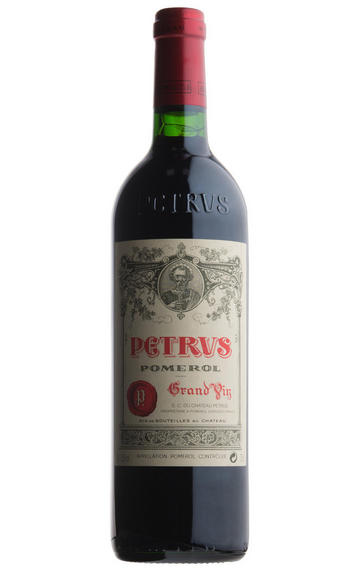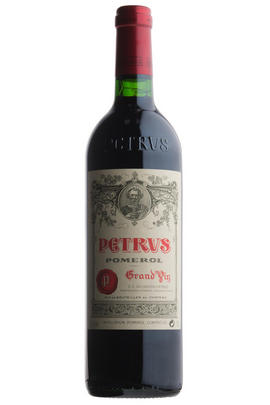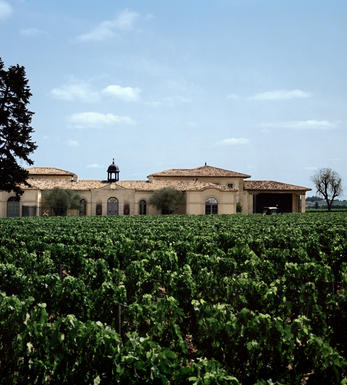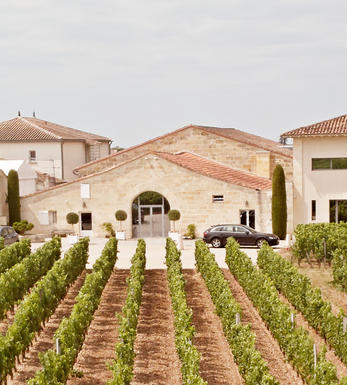
1989 Petrus, Pomerol, Bordeaux

Critics reviews
The 1989 Petrus is consistent with previous bottles in the sense that it represents the apotheosis of not only the vineyard but of Pomerol itself. It still provides that almost surreal cornucopia of aromas, red fruit melted with tar, tobacco, and hints of camphor and ash, all delivered with astonishing precision.
The palate is perfectly balanced and intense yet paradoxically weightless. This example is one of the finest I have encountered regarding clarity and precision. Ethereal. Step this way if you want to taste a genuine 100-point wine. Magnificent! Tasted at the Petrus dinner at Hide restaurant in London and Epure restaurant in Hong Kong.
Drink 2020 - 2045
Neal Martin, Vinous.com (December 2019)
This wine is more tightly knit and more tannic, but every bit the blockbuster concentrated effort that its younger sibling, the 1990, is. It needs more coaxing from the glass, but the colour is virtually identical, a dense ruby/purple with no lightening at the edge.
In the mouth, the wine cuts a broad swath, with spectacular intensity, richness, massive concentration, and high levels of tannin, yet the wine is fabulously well-delineated and, like its sibling, the 1990, has a finish that goes on for nearly a minute. It is not quite as evolved as the 1990, and my instincts suggest there is a bit more tannin, but both are as prodigious as Petrus can be.
Drink 2010 - 2040
Robert M. Parker, Jr., Wine Advocate (January 2003)
About this WINE

Petrus
Petrus is a wine estate in Pomerol on the Right Bank of Bordeaux. It is among the most celebrated and recognisable wines in the world.
While the estate can trace its history to at least 1837, it flew relatively under the radar until around the 20th century. Madame Loubat, who became the sole owner in 1945, felt that the estate was truly special, and her efforts were instrumental in establishing Petrus on the world stage. She also appointed Jean-Pierre Moueix as the exclusive agent; he and his sons Jean-François and Christian were key in building the estate’s modern reputation. The Moueix family became majority owners here in 1969. In 2018, they were joined by American-Colombian Alejandro Santo Domingo, who purchased a 20% stake.
Petrus is located atop the Pomerol plateau. Most of its vines sit on a so-called “buttonhole” of blue clay soil, known as smectite. This soil’s ability to retain water is a huge benefit in the Pomerol appellation, where drought is a known issue. The vineyard is planted mostly to Merlot.
The estate is run today by winemaker Olivier Berrouet, previously of neighbouring Château Cheval Blanc. Olivier joined in 2008, taking over from his father, Jean-Claude, who had produced 44 vintages of Petrus in his time.

Pomerol
Pomerol is the smallest of Bordeaux's major appellations, with about 150 producers and approximately 740 hectares of vineyards. It is home to many bijou domaines, many of which produce little more than 1,000 cases per annum.
Both the topography and architecture of the region is unremarkable, but the style of the wines is most individual. The finest vineyards are planted on a seam of rich clay which extends across the gently-elevated plateau of Pomerol, which runs from the north-eastern boundary of St Emilion. On the sides of the plateau, the soil becomes sandier and the wines lighter.
There is one satellite region to the immediate north, Lalande-de-Pomerol whose wines are stylistically very similar, if sometimes lacking the finesse of its neighbour. There has never been a classification of Pomerol wines.
Recommended Châteaux : Ch. Pétrus, Vieux Ch. Certan, Le Pin, Ch. L’Eglise-Clinet, Ch. La Conseillante, Ch. L’Evangile, Ch. Lafleur, Trotanoy, Ch. Nenin, Ch. Beauregard, Ch. Feytit-Clinet, Le Gay.

Cabernet Sauvignon Blend
Cabernet Sauvignon lends itself particularly well in blends with Merlot. This is actually the archetypal Bordeaux blend, though in different proportions in the sub-regions and sometimes topped up with Cabernet Franc, Malbec, and Petit Verdot.
In the Médoc and Graves the percentage of Cabernet Sauvignon in the blend can range from 95% (Mouton-Rothschild) to as low as 40%. It is particularly suited to the dry, warm, free- draining, gravel-rich soils and is responsible for the redolent cassis characteristics as well as the depth of colour, tannic structure and pronounced acidity of Médoc wines. However 100% Cabernet Sauvignon wines can be slightly hollow-tasting in the middle palate and Merlot with its generous, fleshy fruit flavours acts as a perfect foil by filling in this cavity.
In St-Emilion and Pomerol, the blends are Merlot dominated as Cabernet Sauvignon can struggle to ripen there - when it is included, it adds structure and body to the wine. Sassicaia is the most famous Bordeaux blend in Italy and has spawned many imitations, whereby the blend is now firmly established in the New World and particularly in California and Australia.


Buying options
Add to wishlist
Description
The 1989 Petrus is consistent with previous bottles in the sense that it represents the apotheosis of not only the vineyard but of Pomerol itself. It still provides that almost surreal cornucopia of aromas, red fruit melted with tar, tobacco, and hints of camphor and ash, all delivered with astonishing precision.
The palate is perfectly balanced and intense yet paradoxically weightless. This example is one of the finest I have encountered regarding clarity and precision. Ethereal. Step this way if you want to taste a genuine 100-point wine. Magnificent! Tasted at the Petrus dinner at Hide restaurant in London and Epure restaurant in Hong Kong.
Drink 2020 - 2045
Neal Martin, Vinous.com (December 2019)
wine at a glance
Delivery and quality guarantee